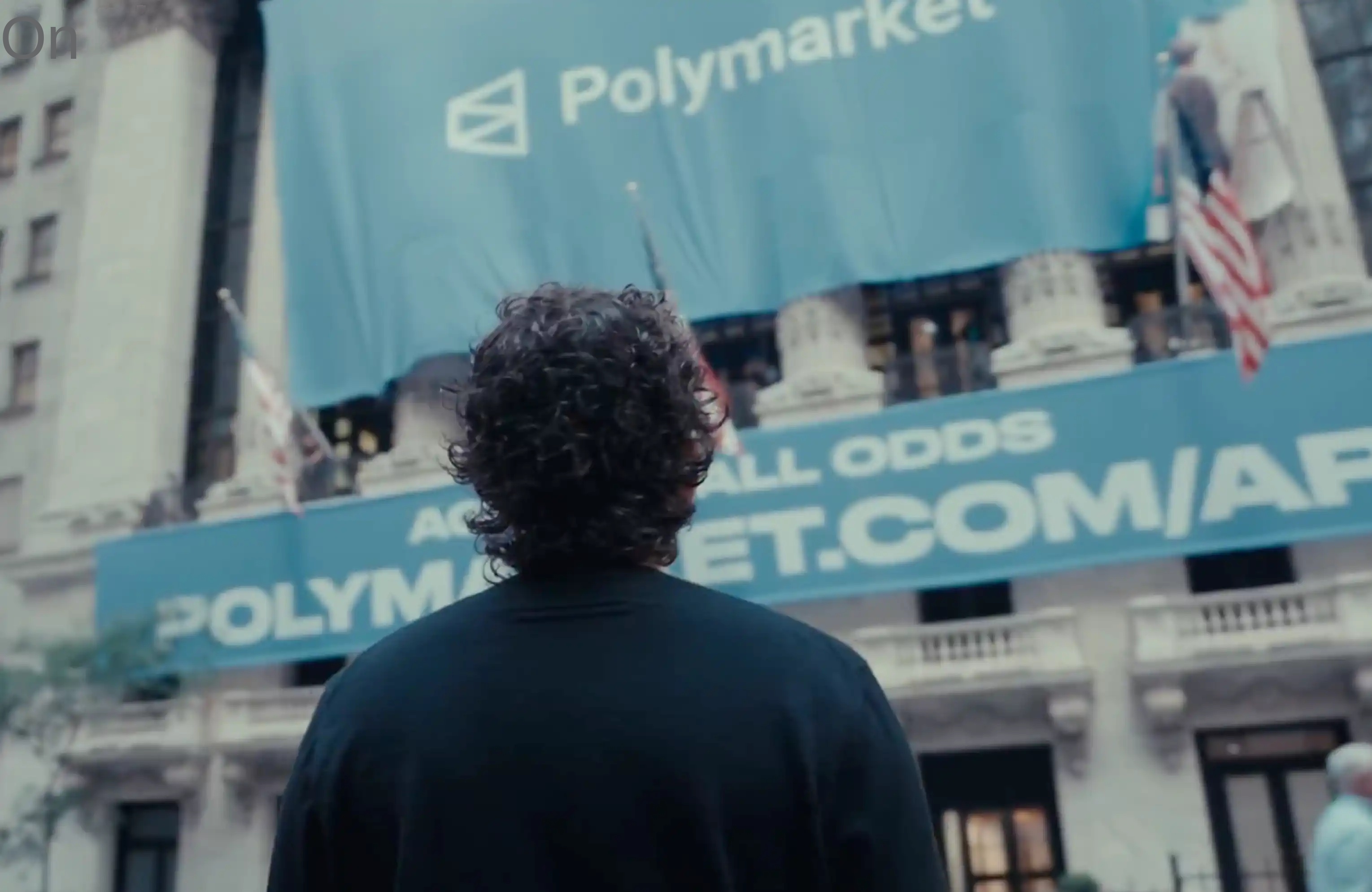Will RWA be the next decisive opportunity for Binance and OKX?
Original title: "Will RWA be the next decisive opportunity for Binance and OKX?"
Original author: Ye Kai (WeChat/Twitter: YekaiMeta)
The most feared article is long and boring. Sometimes, once it starts, it can't be stopped. The topic has come to the RWA exchange. Since the Hong Kong Web3 Conference last year, some bigwigs have been pulling together to set up an exchange. At that time, I was not optimistic about Hong Kong's licensed and compliant exchanges. Instead, I researched the regional markets in Dubai and South America for a long time and the possibility of RWA vertical exchanges; of course, I also visited many friends in exchanges and learned in depth about the ecology of cryptocurrency exchanges, especially the gray wash industry, as well as the core operating community head and investment flow. Several friends also submitted applications for licenses before the deadline at the end of March this year. At that time, I was not optimistic about Hong Kong's license applications and the subsequent Bitcoin ETF. Sure enough, several exchanges in Hong Kong that applied for the No. 7 license have withdrawn in the past few days, and I believe that more institutions will withdraw in the future.
Leaving aside the US's actions against a certain exchange, offshore Binance, OKX and Huobi have recently been selling various tokens, but none of them have taken over. HashKey (Hong Kong site), a licensed exchange in Hong Kong, is compliant but has no trading volume and liquidity. It only has some trading volume after the international site went online, but it is still a share of the existing cake in the current cryptocurrency market. Are there new opportunities in this chaotic fog?
Will RWA Exchange be the next decisive opportunity for Binance, OKX and licensed exchanges?
Those who understand know that the current native cryptocurrency exchanges are already very mature, especially the series of exchanges dominated by Chinese, represented by Binance, OKX and Huobi. In terms of trading scale, if Binance does not have the suicidal problem of Huobi, OKX basically has no chance to surpass it, and second-tier exchanges such as KuCoin and Gate are also difficult to surpass and subvert the first-tier exchanges.
It is basically difficult to surpass a new offshore exchange, because this set of gameplay is already very mature, relying on the gray wash industry, similar to a casino, the main community head and investment flow marketing techniques, the Chinese team can't be more rolling, it's all those people and those techniques, it's nothing more than the difference between fifty steps and a hundred steps. If you create a new one, you can cut a small piece of the cake, but it's hard to surpass it.
And Hong Kong's licensed exchanges are a false proposition. The regulatory agencies are still those financial veterans. The so-called innovative products such as STO securities tokens and Bitcoin spot ETFs are still the traditional financial institutions. The vested interest groups of the Hong Kong Stock Exchange are dividing the cake. It is impossible to really hand it over to the new forces of Web3.
OKX and Binance have been working on Web3 wallets in the new track for so long, but inscriptions, runes, runes, memecoins, etc., were hot for a while but did not hold up, and there was no long cycle and no trading volume. Even BTC core has always been worried about inscriptions and runes, and it is almost difficult to support a large new ecosystem with this.
The US Bitcoin spot ETF is much stronger than the Hong Kong Bitcoin spot ETF. The key is that the US Bitcoin ETF gives us a hint that if we want to expand, we still have to think about the old money and incremental users in the real world.
On the whole, Binance and OKX are already full of volume in the stock cryptocurrency market. The only opportunity for the two is not the Web3 wallets and new memecoins that have been tossed around for so long, but the RWA (+DePIN) exchange/track for tokenization of real-world assets.
The next decisive battle between Binance and OKX, in RWA?
Why do I say that? Because the largest incremental market is in real-world assets.
I listed the figures of real-world assets in the first RWA article, with global currency and market data in 2020 as a reference (US dollars): silver 43.9 billion, gold 10.9 trillion, stocks 89.5 trillion, global debt 253 trillion, real estate 280.6 trillion, derivatives 558.5 (low point) ~ 1000 trillion (high point), not including emerging assets such as AI computing power, renewable energy green, etc.
Incremental market, we can recall: What is the core reason for this round of BTC rising cycle? Basically, everyone thinks it is because of Bitcoin spot ETF. What is the core essence of ETF? The product that connects the real world and Bitcoin is a typical RWA model product, which is traded on the NYSE, Chicago Stock Exchange, and Nasdaq, and the spot trading of Bitcoin is taken over by Coinbase, which directly drives the inflow of tens of billions of dollars, and the incremental daily trading volume is close to four or five billion US dollars.
The only largest incremental market at present is the assets, funds, and users in the real world. We have always emphasized that the essence of RWA is corporate financing, and the core of corporate financing is the institutional market. The mainstream assets and funds in the real world are in the hands of the corporate and institutional markets. Moreover, RWA products allow incremental novice users to use conventional credit cards or pension accounts on traditional exchanges without complicated digital wallets. RWA tokens or digital assets have professional custody and trading platforms.
Returning to the Bitcoin spot ETF, in addition to US listed companies, the fund institutions that followed the ETF, including the pilot investments of banks and pension funds, etc., you only need to analyze one thing, look at the proportion of Bitcoin ETF in its investment allocation and the asset allocation classification before entering, and you will know how big the space behind RWA assets is.
Speaking of real-world assets, RWA exchanges cannot do without DePIN.
The combination of RWA and DePIN is an effective display of the mapping or anchoring of real-world assets. DePIN is the infrastructure for the issuance of real-world assets on the chain. Its essence is the on-chain 3.0+ asset tokenization of the Internet of Things IoT. The head exchanges have long had the DePIN track, but from the DePIN projects that have been listed, if it is based on current WiFi or data sharing projects, it is difficult to directly generate cash flow value; but as the infrastructure for the issuance of RWA assets, it can directly generate RWA token value in the process of asset issuance and trading, and this RWA token cash flow can be further combined into RWA products.
In real-world assets, DePIN combines DAO and smart contract SPV and crypto funds (token dividends or liquidity), which can make RWA asset issuance and anchoring more on-chain and native (the implementation model is complex enough to be discussed in detail in a separate article).
So let's sort it out:
Offshore's top Binance, OKX and Huobi, etc., are all native token exchanges, starting from the earliest ICO and contracts, and becoming the first echelon; Offshore's target customer group is basically mainly retail investors.
Coinbase in the United States is semi-offshore and semi-licensed. When Binance was restrained by the United States and passed the Bitcoin spot ETF, it successfully received this wave of overwhelming traffic; Coinbase's customer base is relatively complex. In addition to retail investors, ETFs have brought a lot of institutional customers.
Hong Kong licensed exchange HashKey (Hong Kong station) follows compliance, mainstream tokens and securitized tokens, and is basically based on PI customers. There are relatively few restrictions on retail investors, and the overall trading volume is not large, and most of them are non-currency-based, especially based on compliance deposits and withdrawals.
In fact, there is also the Hong Kong Stock Exchange. Although the Hong Kong stock market has declined and the trading volume has dropped sharply, it has relied on conservative supervision to fight for power and profit to grab the dominance of Hong Kong Bitcoin spot ETF, and brought a bunch of brokerage intermediary brothers to share the meat. I seriously suspect that STO will be the same. Most of the target customer groups of the Hong Kong Stock Exchange are institutional customers and PI investors, which are equivalent to traditional investors and investment institutions that speculate on Bitcoin concept stocks.
So, do you still expect any revolution and subversion from licensed exchanges in Hong Kong?
We should seriously think about this: Is the RWA exchange the only opportunity to attract old money with real-world assets between offshore exchanges and licensed exchanges?
The core of the RWA exchange
Although the market space of RWA is huge, due to the cross-border or connection between the real world and the crypto world, it greatly requires correct promotion, popularization of knowledge, professional education, consulting incubation, investment consulting, etc. The future popularization of real-world asset tokenization involves a large amount of migration, uplift, trading and delivery, and RWA exchanges and their ecological institutions will become the key.
However, the current licensed exchanges and many so-called RWA exchanges or RWA asset protocols basically only solve the problem of asset issuance, such as STO asset protocols, or NFT voucher models, or the standards and processes of STO asset tokenization, which come to an abrupt end after the tokenization goes online. Practitioners have not yet solved four problems, namely market structure, market participants (2B and 2C), native tokens, and liquidity.
From the perspective of RWA, drawing on the experience of traditional exchanges, the market structure of an exchange is relatively complex, from the underlying assets and funds of the transaction, as well as the transaction methods, from the classification and transaction characteristics of market participants, from the layout of trading channels at different levels of the exchange, etc.
RWA exchanges must first analyze the funding side strategy. First, compared with Hong Kong stocks, the special feature lies in the funds for the exchange of assets between China and the United States. The decoupling of China and the United States has led to a decline in the role of the Hong Kong Stock Exchange and the loss of liquidity. But from the perspective of RWA, can it take over these funds for the exchange of assets between China and the United States that are not put on the surface? Second, compared with ICE, CEX and LME, commodities and precious metals as real-world assets, if they can be converted into RWA products, the spot transactions, futures, options, derivatives and contracts around these assets, plus leveraged arbitrage funds, the scale of funds is also unlimited. Third, similar to the Drip-Irrigation Link ASX, global funds are looking for investment opportunities in cash cow assets. From the perspective of corporate financing needs and overseas funds chasing operating cash flow and short-term returns, this is also a large-scale demand around the RWA field.
The asset side of the RWA exchange needs to reflect the scarcity, leverage and arbitrage characteristics of assets. From the current capital preferences, three types of RWA assets are more favorable: scarce physical assets, assets that can generate stable cash flow, and efficient productive assets. Basically, real estate has been excluded. Scarce physical assets such as AI computing power, green energy, and efficient new materials. Cash cow assets mainly include: naturally scarce and monopolized industries, such as energy, mining, finance, and utilities; cross-economic cycles, such as consumer goods, infrastructure or utilities; efficient materials or productive assets, such as AI computing power, high-end hardware equipment, new materials, etc. From the perspective of RWA asset tokenization, it may be more suitable for high-quality growth assets that have great potential to continuously generate stable free cash flow.
RWA Exchange focuses on incremental users and industrial users, so the market participants are necessarily different from native cryptocurrency exchanges. The participants expected to be brought in by tokenization of real-world assets mainly include: physical enterprises engaged in spot transactions, similar to bill of lading and warehouse receipt transactions; asset allocation transactions, mostly fund institutions conduct macro asset allocation, but why they go to RWA Exchange for allocation requires the design of incentive mechanisms; quantitative arbitrage speculative trading institutions, RWA Exchange may be more suitable for trading strategies and liquidity contracts; intermediary trading service institutions, this is more complicated, and it also depends on the market expansion of RWA Exchange, which can attract more Brokers, Dealers and Makers, etc.
The multi-level layout of the RWA exchange is also critical. The exchange is based on CEX+DEX, with AMM liquidity pools, and OTC bulk transactions necessary for industrial transactions. Because it involves RWA asset tokenization, there must also be L2 infrastructure, LaunchPad asset issuance/launch platform, DePIN as real-world asset infrastructure, NFT as equity certificate and bill of lading certificate, platform tokens as platform governance, transaction incentives or liquidity, DAO+Fund as auxiliary, and Liquidity or Farming liquidity mechanism.
In short, the key to the RWA exchange lies in several aspects: the issuance of real-world assets on the chain, the chain 3.0 based on DePIN IoT and the tokenization of real-world assets; on-chain native token governance, incentives or arbitrage, which is to attract incremental intrinsic value; better promotion of structuring and liquidity, making up for or improving the shortcomings of traditional finance or exchanges; and the realization of multi-level financing and trading markets.
In terms of funding, we need to establish smooth and acceptable channels from overseas liquidity and financing markets to attract more institutional and corporate clients; design arbitrage space based on the characteristics of RWA assets, with sufficient asset value space and incremental intrinsic value; combine the combined advantages of blockchain and digital assets such as NFTs, tokens and contracts to further realize the value structuring of traditional stock markets, bonds, derivatives, etc., while combining the intrinsic value incentives of native tokens; ultimately, expand the financial narrative of the RWA trading platform and the financial market value of the platform tokens, and realize an RWA industry blueprint of "DePIN+industry transactions+digital IPO (RWA asset issuance)+digital banking+industry index and other digital derivatives+industry/platform currency".
Don’t doubt the scale of real-world assets. Let’s not talk about commodities such as CME, just Shandong’s agricultural product electronic trading platform. The electronic trading platform of garlic alone exceeds 20 billion yuan. This can also be regarded as the RWA model. Based on the RW transactions such as futures arbitrage, spot transactions and cold storage warehouse receipts during the garlic planting cycle, the electronic trading platform (website + APP) formed by leveraging and arbitrage operations can be easily migrated to the chain, and the chain is RWA transactions.
I accidentally talked too much, and I still want to talk about the economic design model of RWA Exchange. So, let’s think about it now: Does RWA Exchange have the opportunity to replace HKEX and become the connection point in the future multi-polarization?
This article comes from a contribution and does not represent the views of BlockBeats.
Welcome to join the official BlockBeats community:
Telegram Subscription Group: https://t.me/theblockbeats
Telegram Discussion Group: https://t.me/BlockBeats_App
Official Twitter Account: https://twitter.com/BlockBeatsAsia


 Forum
Forum Finance
Finance
 Specials
Specials
 On-chain Eco
On-chain Eco
 Entry
Entry
 Podcasts
Podcasts
 Activities
Activities
 OPRR
OPRR









